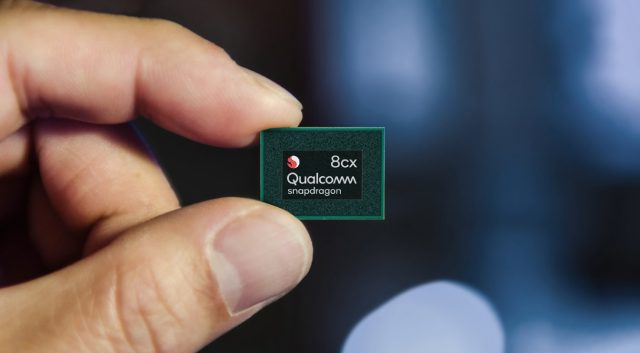
Intel and AMD could be looking at some stiff competition in the processor game. Fresh off announcing its new Snapdragon 855 mobile chip, the company has announced the Snapdragon 8cx. It’s for laptops instead of smartphones and is by far the most powerful processor the company has ever made. How can you tell? The “X” in the name stands for “extreme.”
While the Snapdragon 8cx is not the company’s first PC chip (that honor goes to the quickly forgotten Snapdragon 850), it’s the first one that could make Intel take note. Like the 855, the Snapdragon 8cx uses a 7nm manufacturing process. It has the same octa-core design with four high-performance cores based on the Cortex A76 and four low-power cores based on the A55. That’s really the end of the similarities, though.
Qualcomm has cranked the clock speed of all of its “Kryo 495” cores way up in the Snapdragon 8cx, but it won’t say exactly how high. The chip has 10MB of cache between L2 and L3 — the 855 only has 3MB. That makes the Snapdragon 8cx better at running heavy apps, and there’s support for up to 16GB of system memory. You can also check the boxes for NVMe and UFS3.0 storage.
The 7nm process, which no other chip maker has yet managed, gives the Snapdragon 8cx excellent performance for the power draw. At a sustained 7W of power, Qualcomm says the 8cx is twice as fast as a comparable Intel U-series CPU and four times as fast as the fanless Y-series chip. The ARM architecture doesn’t need to throttle as quickly due to heat buildup, so Qualcomm isn’t talking about peak performance. It’s likely Intel chips still clobber Qualcomm when it comes to single-threaded maximum throughput.

There’s also a new Adreno 680 Extreme GPU in the Snapdragon 8cx, but Qualcomm keeps a lot of its Adreno specs secret. What we do know is it’s fast. The 680 Extreme is twice as fast as the new GPU in the Snapdragon 855 thanks to twice the transistors and twice the memory bandwidth. You can connect two 4K monitors to a Snapdragon 8cx system. Like the CPU cores, the GPU can also remain cranked up for longer than comparable solutions in current laptops.
Qualcomm hasn’t offered battery life specifics, but we expect plenty of longevity. The 850 promised 25 hours of usage, and the Snapdragon 8cx is even more efficient. The SoC also includes an integrated LTE modem, so laptops running on the 8cx should have always-on connections as an option.
Qualcomm says the first Snapdragon 8cx systems will ship at some point in the third quarter of 2019.





























